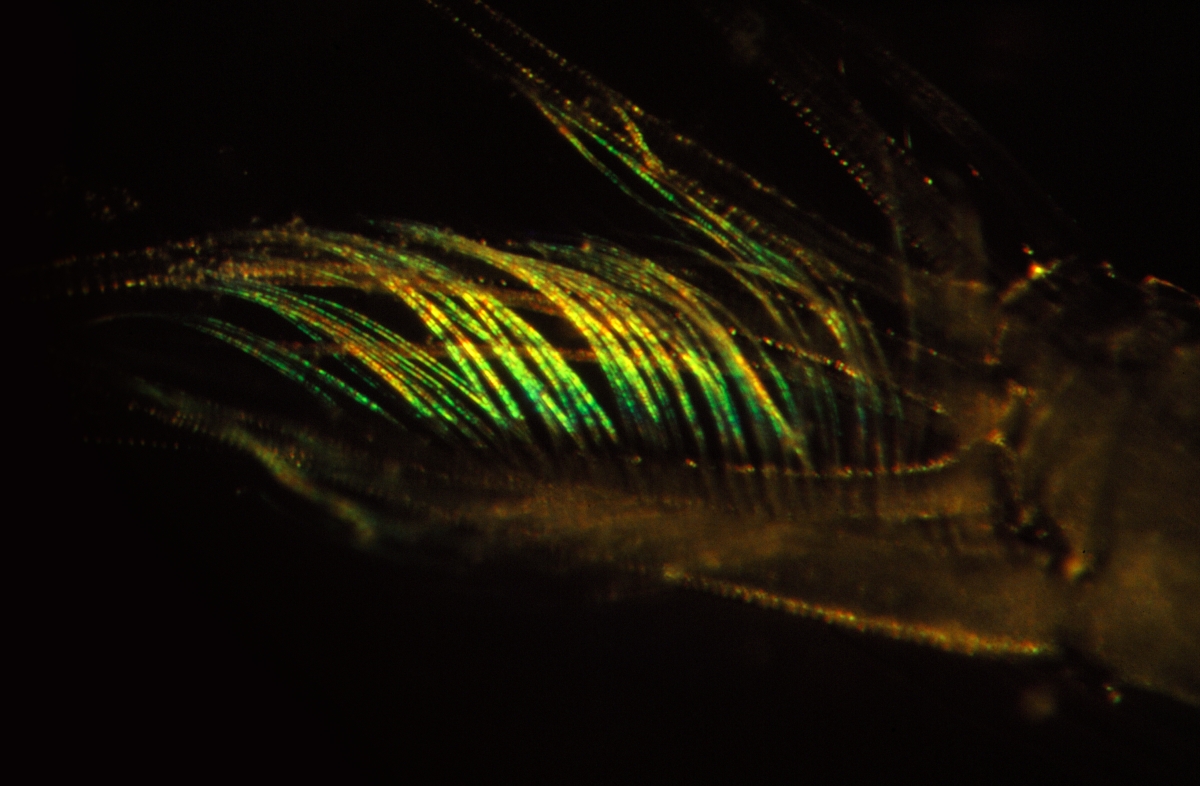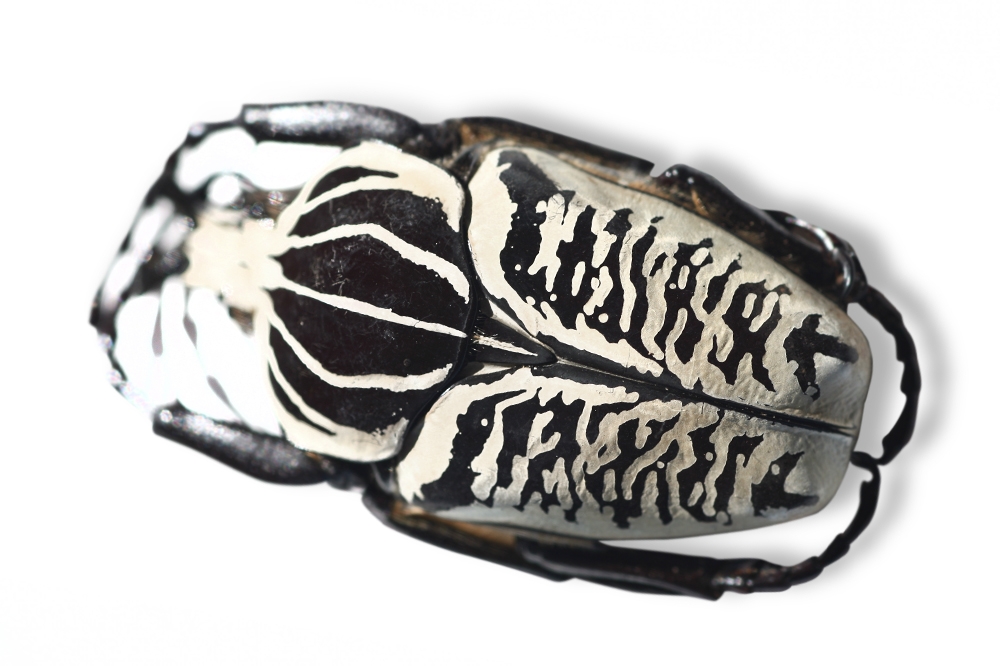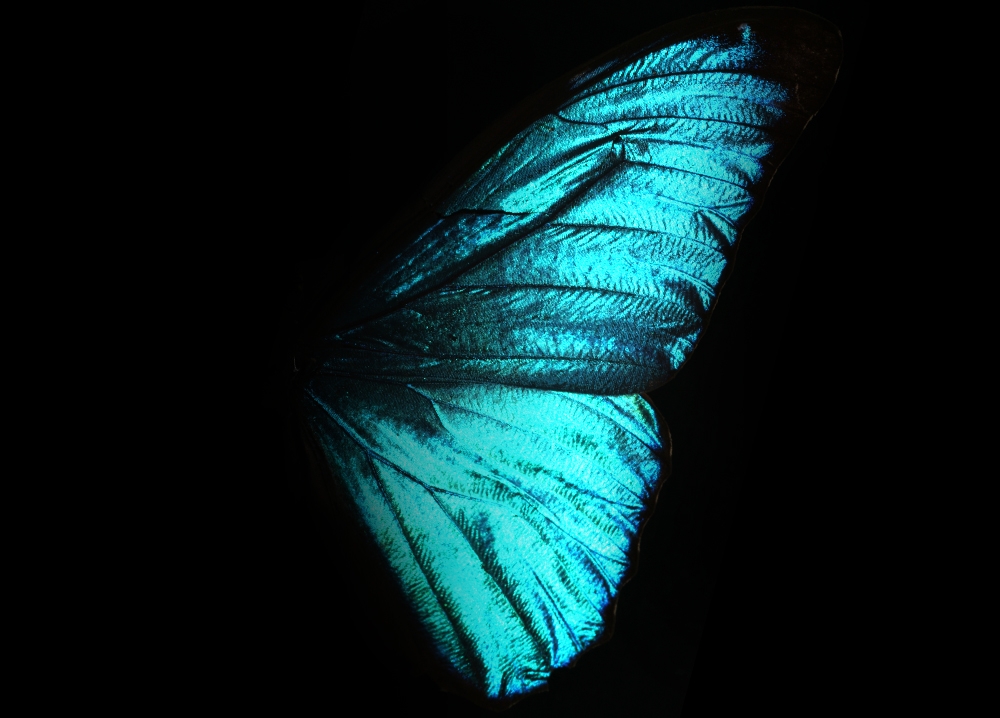The Life scaped Story
Underwater discovery
From 1990 to 1999, Andrew Parker lived underwater, in the Australian sea, and noticed that the extraordinary diversity of marine colours were brighter than those found in commerce. At the Australian Museum and Macquarie University, he discovered new types of ‘structural’ colours – colours generated by microscopic structures in transparent materials, rather than pigments or dyes. These had commercial potential, and led to a series of scientific publications beginning in 1995.

Light Switch Hypothesis
In 1998, Andrew Parker published the Light Switch Hypothesis. He discovered that the evolution of image-forming eyes, and vision in the general community of animals, triggered the 'Cambrian explosion' – the Big Bang of evolution. As a result of this, the US Secretary for Defense instigated work on 'The Cambrian Programme' – biomimetic predictive software that emulated events in nature. This grew to include 'ant colony optimisation'. Based on this work, The Royal Institution selected Andrew Parker as one of the eight Scientists for the New Century.

Structural colour and water management discoveries
From 1999 to 2006, Andrew Parker formed a biomimetics group at Oxford University. A sand dune was recreated in the lab and filled with darkling beetles from the Namib Desert. The mechanism allowing the beetles to collect water from fogs was discovered, and developed for air conditioning systems.
Butterflies and metallic-coloured beetles were reared and studied in electron microscopes. The same microstructure as found in opal was discovered in an animal, offering a new method of manufacture for this ‘gemstone’ with applications in computer circuits, and the way that butterflies make the structural colour in their scales was observed (awarded the Institute of Civil Engineers’ Malik Award in 2016). This method uses minimal energy, generates no waste and causes no harm to the environment. Optical structures were even found in fossils – an 'anti-reflector' in a 45 million-year-old fly was manufactured for solar panels, which improves energy capture by 10%.

Royal approval
In 2006, HRH Prince Charles visited the Oxford Biomimetics lab. He noted the potential, but asked, “Where are the products?” This proved a turning point. His Royal Highness introduced us to business leaders, who helped to transform our lab into a company ready for commerce. Eventually, with the introduction of lawyers, managers and designers, Lifescaped was born. We fine-tuned our working procedure at Stanford, MIT, and Shanghai Jiao Tong universities, and finally began to understand why some innovations in nature can make good business cases.
Lifescaped's Launch Event, Clarence House, 2014

Lifescaped symbolism
We have developed symbols that represent our work and history. The outer boundaries are eye-shaped, since our inaugural work sprang from fortuitous discoveries based around vision. The different, internal designs are patterns found within those good designs in nature. The companies we work with may use these symbol.

Literature
- Parker, A.R. 2003 In the Blink of an Eye. Simon & Schuster (London)/Perseus Press (Cambridge, USA + translations), 316pp.
- Parker, A.R. & Townley, H.E. 2014. Making photonic crystals via cell culture: Morpho butterfly scales. Bioinspired, Biomimetic and Nanobiomaterials 4, 68-72.
- Parker, A.R., Schoenemann, B., Haug, J.T. Waloszek, D. 2013. An unusual cornea from a well preserved (‘Orsten’) Cambrian compound eye. Paleontological Research 17, 251-260.
- Parker, A.R. & Townley, H.E. 2007. Biomimetics of photonic nanostructures. Nature Nanotechnology 2, 347-353.
- Parker, A.R. 2005. A geological history of reflecting optics. J. R. Soc. Lond. Interface 2, 1-17.
- Parker, A.R. 2005. Seven Deadly Colours. Simon & Schuster (London). 286pp.
- Parker, A.R.,Welch, V.L., Driver, D & Martini, N. An opal analogue discovered in a weevil. Nature (2003) 426, 786-787.
- Parker, A.R. and Lawrence, C.R. Water capture from desert fogs by a Namibian beetle. Nature (2001) 414, 33-34.
- Parker, A.R., McPhedran, R.C., McKenzie, D.R., Botten, L.C. and Nicorovici, N.-A.P., Aphrodite’s iridescence. Nature (2001) 409, 36-37.
- Parker, A.R. & McKenzie, D.R. The cause of 50 million-year-old colour. Letters of the Royal Society of London: Biological Sciences (2003) 270, S151-S153.
- Parker, A.R., Fluorescence of yellow budgerigars. Science (2002) 296, 655.
- Parker, A.R., The coelotrich: form and function of an unusual sensillum in Lowrya (Ostracoda: Myodocopina: Cypridinidae). Philosophical Transactions of the Royal Society of London: Biological Sciences (2000) 355, 1121-1124.
- Parker, A.R., 515 Million years of structural colour. Journal of Optics A: Pure and Applied Optics (2000) 2, R15-28.
- Parker, A.R., McKenzie, D.R. and Large, C.J., Multilayer reflectors in animals using green and gold beetles as contrasting examples. Journal of Experimental Biology (1998) 201, 1307-1313.
- Parker, A.R., McKenzie, D.R. and Ahyong, S.T., A unique form of light reflector and the evolution of signalling in Ovalipes (Crustacea: Decapoda: Portunidae). Proceedings of the Royal Society of London: Biological Sciences (1998) 265, 861-867.
- Parker, A.R., Hegedus, Z. and Watts, R.A., Solar-absorber type antireflector on the eye of an Eocene fly (45Ma). Proceedings of the Royal Society of London: Biological Sciences (1998) 265, 811-815.
- Parker, A.R., Colour in Burgess Shale animals and the effect of light on evolution in the Cambrian. Proceedings of the Royal Society of London: Biological Sciences (1998) 265, 967-972.
- Parker, A.R., Discovery of functional iridescence and its coevolution with eyes in the phylogeny of Ostracoda (Crustacea). Proceedings of the Royal Society of London: Biological Sciences (1995) 262, 349-355.
Notable achievements
Lifescaped came first in the UK's IP100 (Intellectual Property) awards for "Patents" in 2018.

13-part children’s TV series on biomimetics for NHK
Feature film made by NHK, based on In the Blink of an Eye
Scientist for the New Century, awarded by The Royal Institution

Other website: www.gtc.ox.ac.uk/about/fellows/andrew-parker